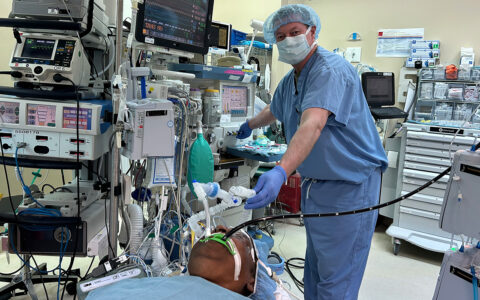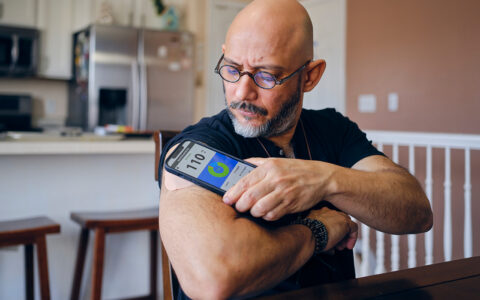With more than a quarter of Americans now overweight or obese, providers are working to distinguish those at highest risk of developing associated disease.
“Not all obesity is the same. If we have better indices than BMI to understand a person’s risk of disease, that would help us better focus health care resources,” said Kevin Niswender, M.D., Ph.D., an associate professor of medicine at Vanderbilt University Medical Center.
“Not all obesity is the same. If we have better indices than BMI to understand a person’s risk of disease, that would help us better focus health care resources.”
Niswender and colleagues have been exploring alternatives to the classic BMI calculation (weight divided by the square of height) that might better predict metabolic and cardiovascular outcomes. They described one successful method via a short communication in Obesity Science & Practice.
“We explored different models where height and weight weren’t related in a fixed manner but rather were treated independently,” Niswender explained. “When you unlink those and let them be independent predictors of cardiometabolic disease risk, they work better.”
Power of Statistics in the EHR
“BMI forces a rigorous relationship between height and weight. It doesn’t take into consideration differences between individuals,” Niswender explained. He draws the comparison between a slender retiree with a “growing potbelly” and a linebacker, both of whom might have similar BMIs but very different risk factors.
“Our model is more flexible,” explained senior author Quinn S. Wells, M.D., Pharm.D., an associate professor of cardiovascular medicine at Vanderbilt. “It models height and weight as independent, interacting variables, and incorporates far less bias than BMI.”
“Our model is more flexible. It models height and weight as independent, interacting variables, and incorporates far less bias than BMI.”
To develop the model, Niswender and Wells collaborated with biostatistician Frank E. Harrell Jr., Ph.D., associate director of the Vanderbilt Institute for Clinical and Translational Research (VICTR) Research Methods Program.
When the researchers pitted their model against BMI using EHR data, it provided more accurate risk prediction across a range of conditions and outcomes. These included hypertension, diabetes, atrial fibrillation, coronary artery disease, heart failure and others.
These risk calculations required advanced statistics, they acknowledge. In practicality, such a model may be most appropriate embedded into the EHR, where a risk score could be calculated automatically and shared with providers.
“It’s akin to a genetic risk score for other diseases. This measurement could even be coupled with genetic risk scores for a fuller understanding of an individual’s risk profile,” Niswender said.
Fresh Perspective
The new model offers a fresh perspective on sometimes limited clinic data, say the researchers.
“Because alternative measures of body composition such as waist-to-hip ratio are not routinely collected in the clinic, clinical risk models quantifying risk based on height and weight measurements alone are essential to improve practice,” they wrote.
Due to its convenience, BMI may persist as the gold standard for a quick risk assessment, and it may remain appropriate in some instances.
“BMI works really well to predict cardiometabolic risk when you have a very large population; but at the individual level, it does not work very well,” said Niswender, who has previously helped develop large databases to assess obesity-related disease risk.
A Portfolio of Progress
The alternative BMI project is one of many orchestrated by the American Heart Association’s Strategically Focused Research Networks. Vanderbilt is one of four institutions participating in the network focused on obesity, and the group recently published a sweeping review of obesity-related health risks and solutions. A suite of projects is injecting precision medicine into the space.
Beyond the alternative BMI work, Vanderbilt researchers are contributing data related to the role of GLP-1 receptor signaling in cardiometabolic disease. They have identified key genetic variants that drive an individual’s response to antidiabetic drugs and could inform individualized therapies.
Others at Vanderbilt have tested the ability of GLP-1 agonists to circumvent glucose sensitivity in specialty groups, including among post-transplant and inpatient populations. Niswender is hopeful that GLP-1 studies might be supported by improved risk assessment at the outset.
“GLP-1 analogs require lifelong treatment. If we’re going to commit someone to these costly drugs, we want to focus on those who are going to get metabolic benefit,” Niswender said.
Improved risk models, like the alternative BMI, may be the answer to early detection.
“If we could identify those at highest risk, we could deploy other resources first, in a targeted manner,” Niswender said. This could include resources designed around a healthy lifestyle, such as referrals to a dietician, gym memberships, or counseling, he said.






